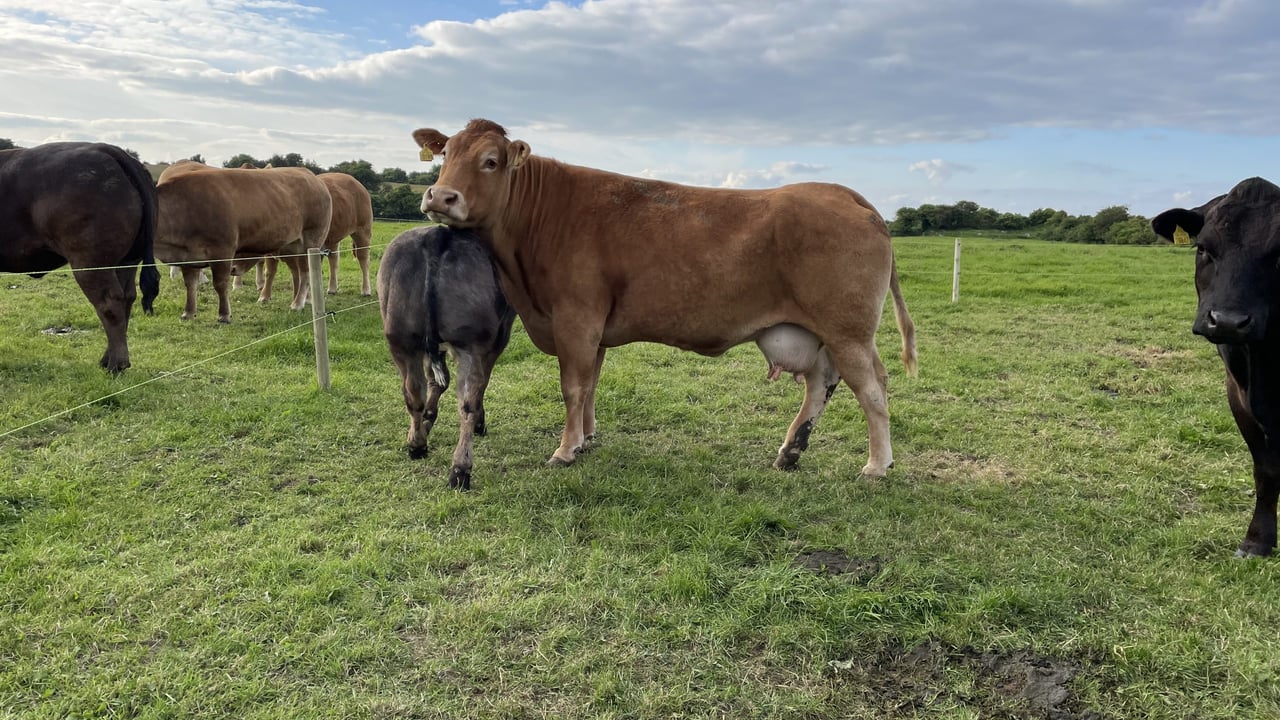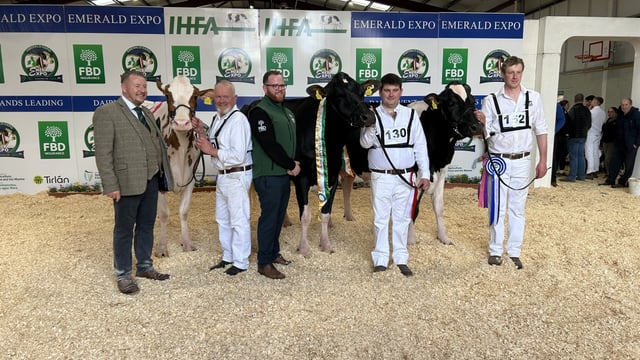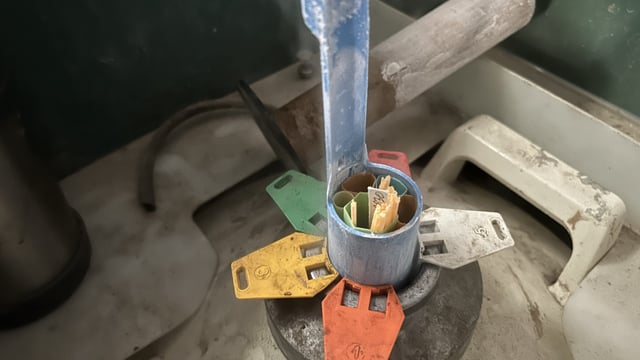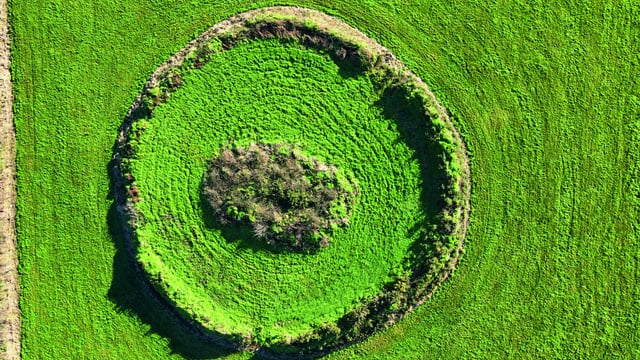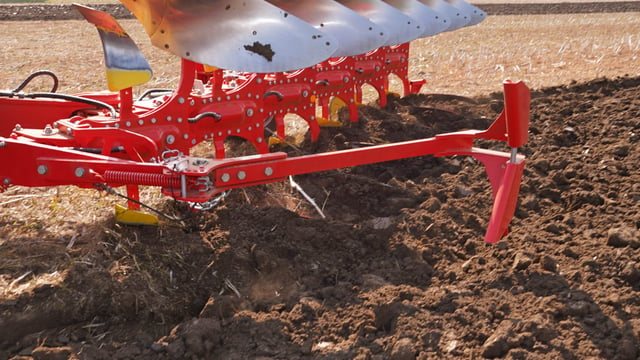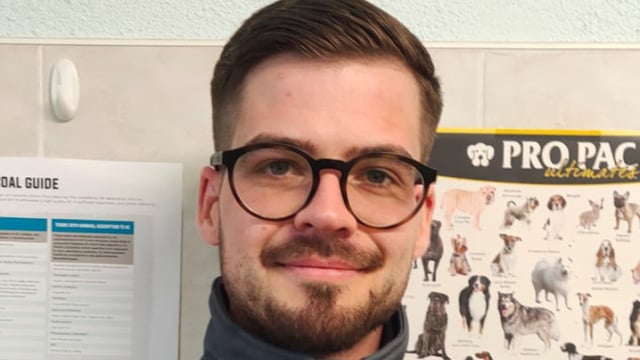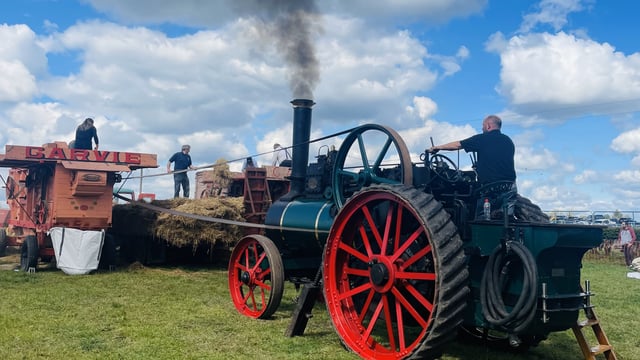AI or stock bull: Factors to consider for suckler farmers
Less than 20% of all suckler-bred calves born in Ireland are bred from artificial insemination (AI) sires, with the remaining approximately 80% of suckler-bred calves are bred from stock bulls, according to Teagasc.
Where suckler farmers are working on fragmented land or are part-time farming, an effective stock bull is beneficial in ensuring cow heats are not missed and cows go back in calf on time.
Where the use of AI is feasible in breeding suckler progeny, it can offer significant benefits to farmers in increased progeny value and improving the herds' genetic merit.
The chart below shows the sire breeds for suckler-bred calves born in 2024 from AI sires:
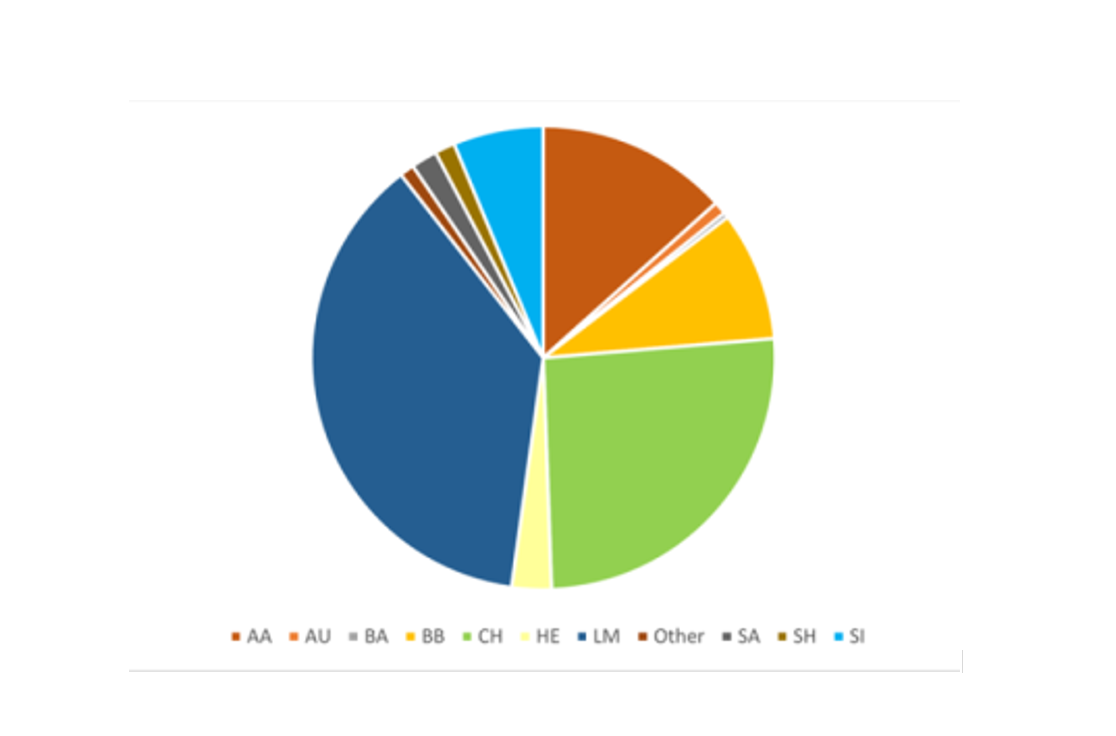
According to Teagasc, 154,547 suckler-bred calves were born to AI sires in 2024. As the chart above indicates, Limousin, Charolais, and Angus were the three most popular AI sire breeds for the 2024-born suckler-bred calves.
The use of AI also gives farmers access to a wider range of genetics, allowing the sires offering the most suitable terminal and replacement traits to be selected and used on a cow-by-cow basis.
Mature cows with a higher threshold for calving difficulty can be bred to more terminal sires, while heifers can be bred to easier-calving sires.
In some herds, farmers prioritise the use of AI to breed replacement heifers with a high genetic merit while a stock bull is used with high terminal traits on the remaining cows.
Bull fertility
As farmers using a stock bull will know, ensuring bull fertility is high is essential in limiting the number of missed heats in the suckler herd.
Teagasc figures indicate the reported incidence of infertility in stock bulls is generally low - anywhere from 3-5% - but bull subfertility is much more common, often at 20-25%.
Serving suckler cows to AI at the correct time
Where AI is being used, ensuring the right cows get served at the right time can be one of the biggest challenges in achieving high AI conception rates.
Careful management and observation of heats is needed In order to run a successful AI programme.
Timely heat detection is essential in order to achieve high conception rates to AI. Observing animals early in the morning and late in the evening is recommended.
A high empty rate when using AI can be attributed to several factors including missed heats, observing animal heats at the wrong times, and poor body condition score (BCS).
It can be challenging to effectively observe cow heats visually, but there are a range of heat detection aids available to farmers.
When a heat has been identified, farmers should work off the ‘am:pm’ rule – where cows have been seen bulling for the first time in the morning, they should be inseminated that evening. Cows identified in the evening time should be inseminated the following morning.

